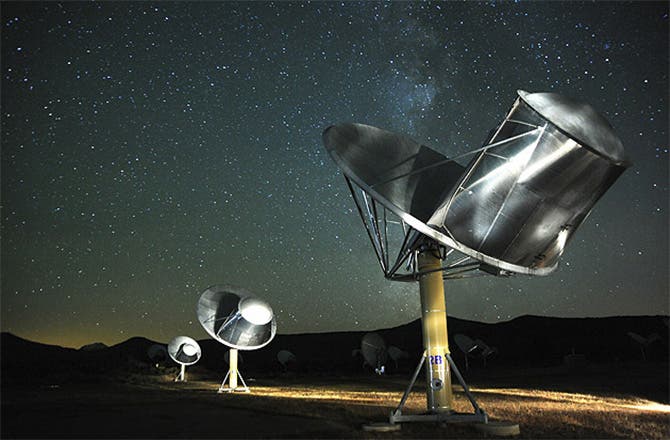A star system 94 light-years away stepped in as a potential candidate for intelligent life, after Russian astronomers detected a radio signal emerging from within.

The SETI Institute is using the Allen Telescope Array in Northern California to confirm an intriguing signal coming from the star HD 164595, but so far there have been no results. Credit: SETI Institute
HD 164595 is a solar system a few billion years older than the Sun, centered on a star of comparable size and brightness to the Sun. The only planet we know of so far in the system is Neptune-sized, which makes it highly unlikely to host life, but other planets may still lurk undiscovered in the system.
Before recently, HD 164595 was relatively uninteresting, a solar system like any other, but Russian scientists working with an Italian researcher, Claudio Maccone, the chair of the International Academy of Astronautics Permanent SETI Committee found an interesting signal originating there. Just to be clear: no one is saying that this is an alien signal, but it’s a possibility – unlikely, but still a possibility.
Based on the signal’s characteristics, a potential alien society would have to generate about 100 billion billion watts of energy to blast it out in all directions – a tremendous effort. Even if they somehow sent the signal only in Earth’s direction, they’d still need to produce over a trillion watts. That’s a huge figure, says Seth Shostak, of the SETI Institute in Mountain View, California, who was not part of the team.
“The first number is hundreds of times more than all the sunlight falling on Earth,” he said. “That’s a very big energy bill.”
This is an effort much larger than what we could do from Earth, and the possibility that this is indeed an alien signal doesn’t seem terribly promising.
“Nonetheless, one should check out all reasonable possibilities, given the importance of the subject,” a SETI statement reads. “Consequently, the Allen Telescope Array (ATA) was swung in the direction of HD 164595 beginning on the evening of August 28. According to our scientists Jon Richards and Gerry Harp, it has so far not found any signal anywhere in the very large patch of sky covered by the ATA.”
There’s a good chance we may have gotten worked up for nothing and the signal could have natural (astronomic) causes. In the end, we can only say that this is something “interesting,” Shostak writes.
“So what’s the bottom line? Could it be another society sending a signal our way? Of course, that’s possible. However, there are many other plausible explanations for this claimed transmission – including terrestrial interference. Without a confirmation of this signal, we can only say that it’s “interesting.” “









